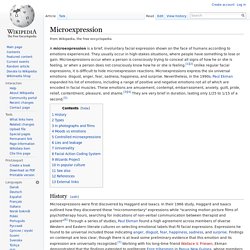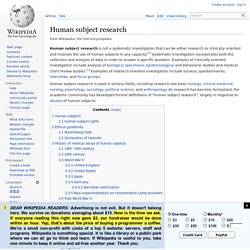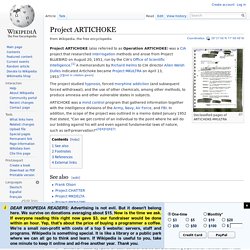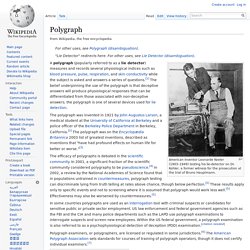

Eye Movement and Lying - How to detect lies. Interesting Info -> Lying Index -> Eye Direction & Visual Accessing Cues Eye Movement and Direction & How it Can Reveal Truth or Lies This is a continuation of our previous article Detecting Lies.

Many comments by our visitors asked about how eye direction can indicate the presence of a lie. Can the direction a person's eyes reveal whether or not they are making a truthful statement? Short answer: sort of. In these shows a detective will deduce if a person is being untruthful simply because they looked to the left or right while making a statement. In reality, it would be foolish to make such a snap judgment without further investigation... but the technique does have some merit. Killology. The soldier's choice[edit] Grossman claims in his book On Killing that a soldier is faced with four options once they have entered into combat.[3] These are: Fight: as the name implies this is the standard that defines the soldiers role as actively trying to defeat the enemy by use of their training.Flight: this option involves the combatant fleeing the engagement.Posture: This action involves the soldier falsely showing active participation in combat.

Microexpression. A microexpression is a brief, involuntary facial expression shown on the face of humans according to emotions experienced.

They usually occur in high-stakes situations, where people have something to lose or gain. Microexpressions occur when a person is consciously trying to conceal all signs of how he or she is feeling, or when a person does not consciously know how he or she is feeling.[1][2] Unlike regular facial expressions, it is difficult to hide microexpression reactions. Microexpressions express the six universal emotions: disgust, anger, fear, sadness, happiness, and surprise.
Microexpression. Project MKUltra. Declassified MKUltra documents Project MKUltra — sometimes referred to as the CIA's mind control program — was the code name given to an illegal and clandestine program of experiments on human subjects, designed and undertaken by the U.S.

Central Intelligence Agency (CIA). Experiments on humans were intended to identify and develop drugs and procedures to be used in interrogations and torture, in order to weaken the individual to force confessions through mind control. Organized through the Scientific Intelligence Division of the Central Intelligence Agency (CIA), the project coordinated with the Special Operations Division of the U.S. Concerned with "the research and development of chemical, biological, and radiological materials capable of employment in clandestine operations to control human behavior.
" Project MKUltra was first brought to public attention in 1975 by the Church Committee of the U.S. Background[edit] Dr. Precursor experiments[edit] Human subject research. Human subject research is not a systematic investigation that can be either research or clinically oriented and involves the use of human subjects in any capacity.[1] Systematic investigation incorporates both the collection and analysis of data in order to answer a specific question.

Examples of clinically oriented investigation include analysis of biological specimens, epidemiological and behavioral studies and medical chart review studies.[1] Examples of research oriented investigation include surveys, questionnaires, interviews, and focus groups. Human subject research is used in various fields, including research into basic biology, clinical medicine, nursing, psychology, sociology, political science, and anthropology.
As research has become formalized, the academic community has developed formal definitions of "human subject research", largely in response to abuses of human subjects. Project ARTICHOKE. Declassified pages of ARTICHOKE-MKULTRA Project ARTICHOKE (also referred to as Operation ARTICHOKE) was a CIA project that researched interrogation methods and arose from Project BLUEBIRD on August 20, 1951, run by the CIA's Office of Scientific Intelligence.[1] A memorandum by Richard Helms to CIA director Allen Welsh Dulles indicated Artichoke became Project MKULTRA on April 13, 1953.[2][not in citation given] The project studied hypnosis, forced morphine addiction (and subsequent forced withdrawal), and the use of other chemicals, among other methods, to produce amnesia and other vulnerable states in subjects.

ARTICHOKE was a mind control program that gathered information together with the intelligence divisions of the Army, Navy, Air Force, and FBI. See also[edit] [edit] Jump up ^ Science, Technology and the CIAJump up ^ Church Committee; p. 390 "MKULTRA was approved by the DCI [Director of Central Intelligence] on April 13, 1953"Jump up ^ Estabrooks, G.H.
References[edit] Polygraph. American inventor Leonarde Keeler (1903–1949) testing his lie-detector on Dr.

Kohler, a former witness for the prosecution at the trial of Bruno Hauptmann. The polygraph was invented in 1921 by John Augustus Larson, a medical student at the University of California at Berkeley and a police officer of the Berkeley Police Department in Berkeley, California.[2] The polygraph was on the Encyclopædia Britannica 2003 list of greatest inventions, described as inventions that "have had profound effects on human life for better or worse. Waco siege. Paul Ekman. Dr.

Facial Action Coding System. Lie detection. Lie detection, also referred to as deception detection, uses questioning techniques along with technology that record physiological functions to ascertain truth and falsehood in response.

It is commonly used by law enforcement and has historically been an inexact science. There are a wide variety of technologies available for this purpose.[1] The most common and long used measure is the polygraph, which the U.S. National Academy of Sciences states, in populations untrained in countermeasures, can discriminate lying from truth telling at rates above chance, though below perfection.[2][3] They added that the results apply only to specific events and not to screening, where it is assumed that the polygraph works less well.[2] History[edit] The study of physiological methods for deception tests measuring emotional disturbances began in the early 1900s. 21st century[edit] General questioning and testing techniques[edit]